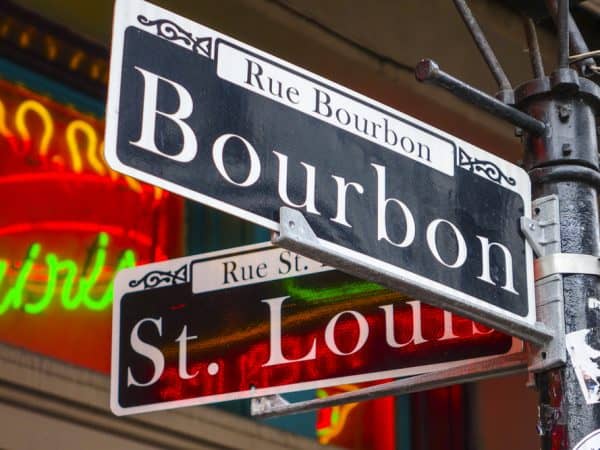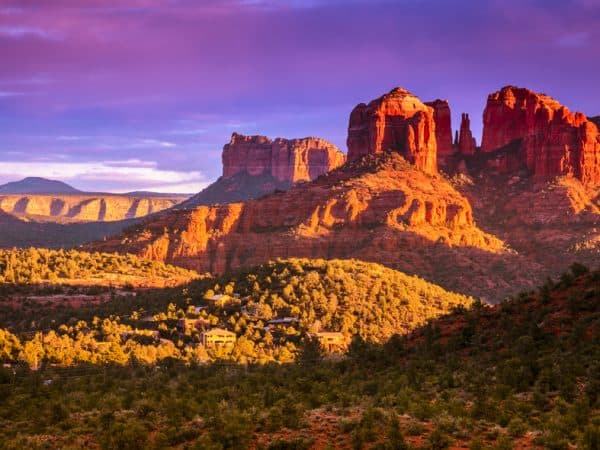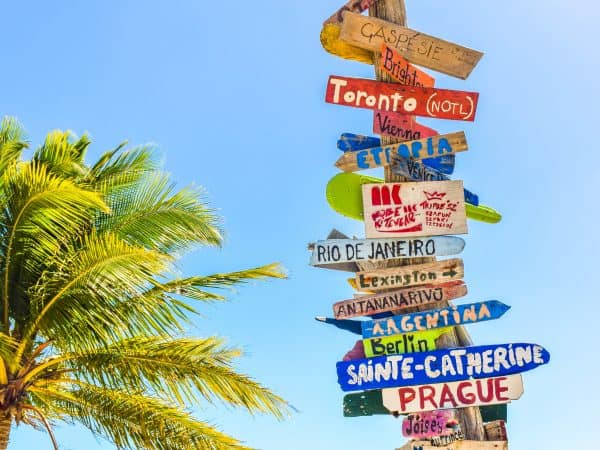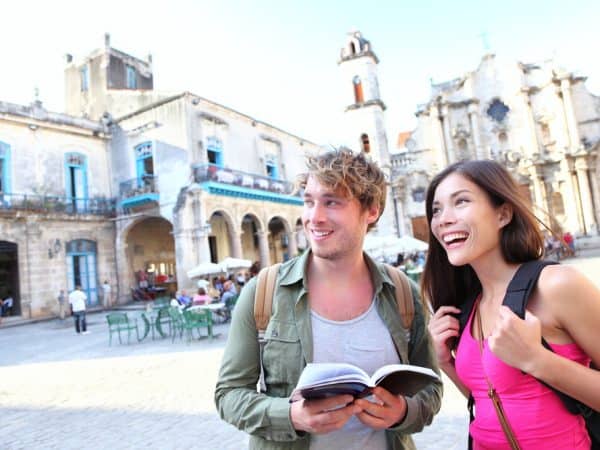If you’re ready to travel again, the travel industry is ready for you. More than ready. But there are a few things you need to know about tourism’s grand opening that might surprise you.
After the COVID-19 outbreak shut down virtually the entire travel industry, the reopenings have been uneven and often unpredictable. Some quarantine orders, such as Florida’s for visitors from the New York area, are still in effect. There’s also a lot of uncertainty, with coronavirus cases spiking in parts of the country. And there are deals — lots of deals.

“We’re taking a very thoughtful approach to how we communicate leisure travel right now,” says Ben McDonald, a spokesman for the Reno-Sparks Convention and Visitors Authority, which markets Reno and Lake Tahoe. “We want to talk to visitors in a way that’s relatable and will make them feel comfortable to visit.”
That may be easier said than done. Reno is pursuing a multichannel, visual-first strategy, showing people it’s safe to come to the area. To keep visitors informed, the city has updated its website with the latest guidelines and restrictions. Also, there’s an emphasis on outdoor activities and safety, to reassure guests that they’ll be fine.
But the last few weeks haven’t exactly been welcoming. In early June, there were violent protests and a curfew in Reno. And nearby California, a primary source of visitors, still has a stay-at-home order.
On a recent Saturday morning, Reno looked like a ghost town. Hardly anyone was out walking, despite the fair weather. I walked into the Eldorado Resort, and, for a moment, I thought the casino had gone smoke-free. It hadn’t. It turns out there was almost no one on the gaming floor, a dramatic contrast to the last time I’d visited the resort, pre-pandemic. The hotels may say they’re open, but are they really?

A grand reopening like no other
A recent American Express Travel survey suggests that, like almost everything else about this pandemic, tourism’s grand reopening will be like no other. It found COVID-19 related factors dominate American travelers’ leisure travel constraints. One in three people is afraid of having social contact when it comes to travel. And 72% of respondents said they felt destination and related hospitality businesses had not resumed normal operations.
For destinations, it’s all about building trust for people who are ready to travel again. Jason Swick, the vice president of digital marketing at Simpleview, a company that develops marketing software used by destinations, says the talking points are the same: “It means showing travelers safety is a top priority by sharing local business pledges, communicating how often public locations are sanitized and promoting social distancing.”
Rolling out the red carpet to people who are ready to travel again
Grand reopenings are all over the map. Some resorts are literally rolling out the red carpet — and flipping a symbolic switch. Consider this live video from the Grand at Moon Palace Cancún, where the first VIP visitors from the United States were welcomed with applause last week. “The first guests to check in were surprised with a massive light switch that officially turned the lights to paradise back on,” says Cessie Cerrato, a resort spokeswoman.
Other places are welcoming visitors back in stages. That’s what’s happening in New Orleans. A few weeks ago, the city started its grand reopening efforts by reaching out to fans who love the city for its food, music, culture or just plain quirkiness.
“Our initial marketing message is directed to these people, with the idea to tickle them with messaging about the things they miss most about New Orleans,” explains Jeff O’Hara, president of PRA New Orleans.
But the Big Easy isn’t quite ready for visitors. It’s in Phase Two of its reopening, which means it’s easing restrictions on medium risk operations, while continuing limits on occupancy, social distancing measures, and requirements for personal protective equipment.
Next month, New Orleans will start marketing to the general public. At the moment, restaurants, attractions and tours are allowed to operate at 50% capacity. In early July, says O’Hara, the city moves to Phase 3, which will allow most businesses to operate at close to normal capacity.

Another approach? The great outdoors. In northern Florida, tourism officials are trying to attract reluctant visitors by emphasizing outdoor activities and open spaces.
“It’s all about cleanliness and how easy it is to safely distance here,” says Barbara Golden, a spokeswoman for the St. Augustine, Ponte Vedra & The Beaches Visitors and Convention Bureau. St. Augustine and St. Johns County have started programs to help create a safe environment. The region’s efforts include digitally monitoring a select group of residents’ temperatures, monitoring wastewater for traces of coronavirus, and initiating a county-wide Pledge St. Johns County program that encourages businesses to commit to CDC health guidelines.
What’s in the grand reopening announcements?
For most American destinations, the grand reopening strategy is pretty simple: send out a press release saying that you’re ready.
For example, Sedona, Ariz., launched a campaign called Clean.Safe.Ready, which includes a series of security precautions adopted by more than 250 businesses. Among them: frequent handwashing, maintaining social distancing, and limiting contact with others. Several Sedona-area hospitality companies, including ElPortal Sedona Hotel, SedonaReal Inn and Suites and ArizonaSafari Jeep Tours, also sent a separate news release to remind people that the destination was a “safe environment” for visitors.
For some areas, reopening is an opportunity to remind visitors of what’s there. In California’s Santa Ynez Valley, just north of Los Angeles, the reopening announcement included a recitation of its most famous inns and hotels: The Landsby, The Santa Ynez Inn and Skyview Los Alamos, Alisal Guest Ranch & Resort, Flying Flags, Hamlet Inn, Santa Ynez Valley Marriott, Sideways Inn, and The Alamo Motel. “Unforgettable stays for a wide range of budgets,” it noted.

A new look after the pandemic
Some destinations rebranded during the pandemic or added something new for visitors who are ready to travel again. Catalina Island, just off the coast of Southern California, transformed itself from the Catalina Island Chamber of Commerce & Visitors Bureau to Love Catalina Island.
“The rebrand was actually in the works long before COVID-19,” explains Jim Luttjohann, CEO of Love Catalina Island. “But the pandemic has made the case to share our love of this island even more important.”
Catalina’s new site is more than a fresh take on a favorite California destination. It also keeps visitors up to date on the latest hotel and attraction openings.
“We’ve been sharing regular updates on the status of travel, along with current deals and offers from hotels and businesses, to our email database to keep them informed and interested,” says Luttjohann.
There seems to be a “love” theme in Southern California. Next week, Los Angeles Tourism is launching a campaign next week called LA❤. It’s a compilation of Los Angeles deals across hotels, restaurants, and other businesses. “We’ll be sharing a specially created landing page for visitors that contains safety information about participating hotels, restaurants, and other members,” says LA Tourism spokeswoman Jamie Simpson.
Carmel-by-the-Sea, which just reopened, unveiled a new Carmel Shell mural on Mission and 6th Ave., with a clever theme. The artwork was scheduled for installation in spring 2020 but paused because of COVID-19. But then tourism officials had an idea. Visit Carmel and the Carmel Public Library created the Carmel Shell-ter in Place campaign, using the shell art as its symbol. The group distributed a shell template for community members to decorate and hang in their windows as a sign of support while “Shell-tering In Place.” Today, the shell is a photo-op for tourists.

Ready to travel again? Here are your deals
There are lots of deals out there. You’ve probably heard of the Las Vegas casino that is giving away flights. And you’ve probably also read about Japan’s plans (which tourism officials deny) to cover part of the cost of vacationing there. Sicily also has plans to subsidize the cost of plane tickets and pay for one of every three nights in hotels, according to my FORBES colleague Cecilia Rodriguez. But good luck taking advantage of those deals. I checked on the Vegas flights and they appeared to be long gone.
But some of the deals, though more modest, are still available. For example, the Greater Miami Convention & Visitors Bureau launched its popular Miami Spice Restaurant program two months early. It offers visitors an opportunity to enjoy their favorite restaurants with three-course meals priced at $25 for lunch and $39 for dinner through Sept. 30. There are also specially curated hotel packages that pair dinner with an overnight hotel stay.
VisitNorfolk and Visit Virginia Beach introduced a program called Together At Last. It’s a cooperative marketing initiative that offers savings at more than 60 local businesses. The discounts range from 10% off at the Williamsburg White House Bed & Breakfast to a buy-one, get-one-free offer at Virginia Stage Company.
Back in Catalina Island, the Hotel Atwater is offering a deal that’s almost too good to be true for returning visitors.To celebrate its 100th anniversary, the hotel just launched a limited time offer called “Toast to 100 Years”. The first 100 rooms will be available to book at a 1920 rate of $4.98. That’s no decimal point error.
At the Hotel Metropole Monte-Carlo, which reopened yesterday, you can book a “Happy Days” package that includes parking, late checkout, an American breakfast and complimentary cocktails at the Karl Lagerfeld-designed pool area.

Tips for people who are ready to travel again
Tourism’s grand reopening is as chaotic as its shutdown. Some places are reopening quickly, others in stages. Some have a fresh face, others are unchanged. And many are offering discounts, even though they aren’t as generous as the headlines would have you believe.
So what does tourism’s grand reopening mean to you?
Don’t assume a hotel or attraction will be open this summer. Even if a destination claims to be open, it doesn’t mean all facilities will be. Websites aren’t always updated in a timely manner. And that’s particularly true for businesses that have gone belly-up. If you’re planning to do something special, call ahead to make sure you can get that Jeep tour in Sedona or those theater tickets in Virginia Beach.
The situation can change quickly, so be flexible. Destinations are happy to have you back, but if there’s a second wave of coronavirus — which there might be — all bets are off. That’s the one common theme in all the reopenings. It’s the “if” in the last paragraph of the opening announcement. Make sure you review all the cancellation policies before you make a reservation. Don’t wait until a lockdown to find out if you can get a refund.
Don’t believe the hype about low prices. You’ve probably seen the headlines about the desperate travel industry that’s giving away its product, hoping to lure you back this summer. That might have been the case in March, but no longer. Most discounts are modest. In my reporting, I found hotels where occupancy was higher than it was at this time last year. Prepare to pay sticker price for some summer vacations.
The travel industry is ready for you this summer. But unless you checked into Grand at Moon Palace Cancún last week, you shouldn’t expect a red carpet. Instead, expect slightly higher prices, crowds and lots of new rules. It’s not quite the grand reopening you were expecting, but at least you have somewhere to go.
Christopher Elliott’s latest book is “How To Be The World’s Smartest Traveler” (National Geographic). This column originally appeared in Forbes.
More Living on the Cheap Articles:
How to purchase travel insurance
How to file a credit card dispute for your canceled vacation
